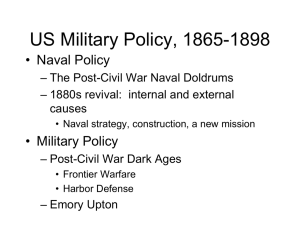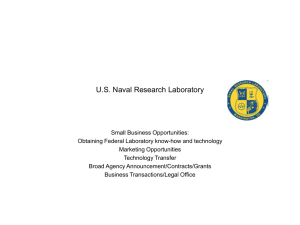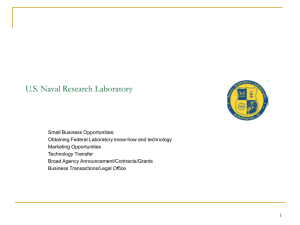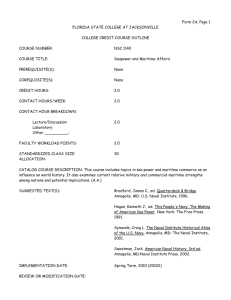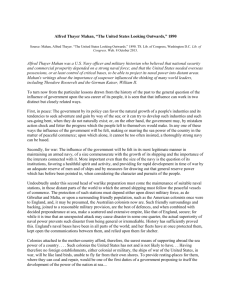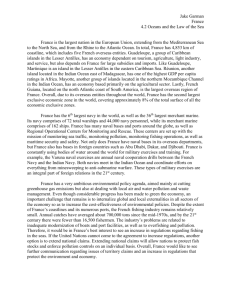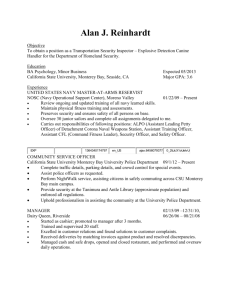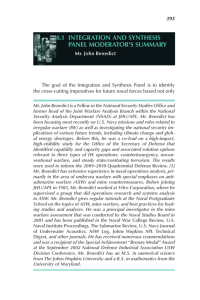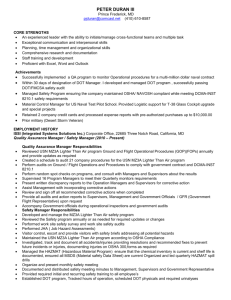Nan Li`s Presentation - Transatlantic Academy
advertisement
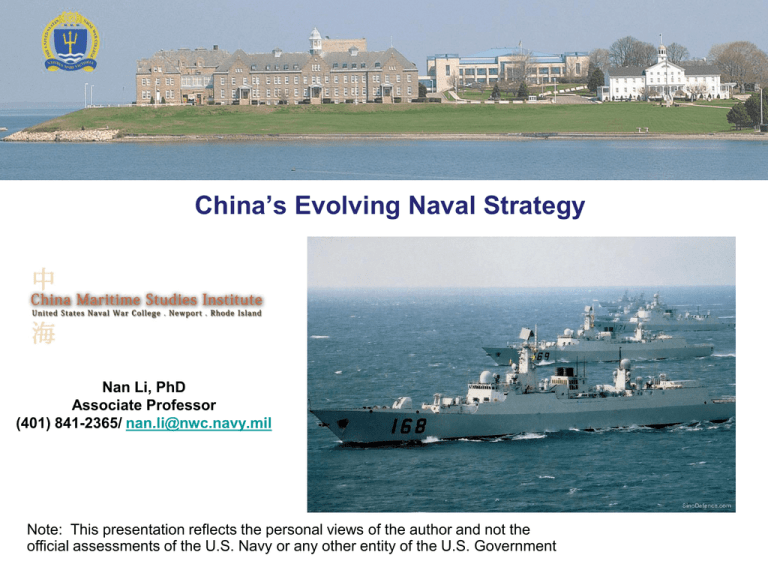
China’s Evolving Naval Strategy Nan Li, PhD Associate Professor (401) 841-2365/ nan.li@nwc.navy.mil Note: This presentation reflects the personal views of the author and not the official assessments of the U.S. Navy or any other entity of the U.S. Government Contents 1. Why important? 2. Near-coast defense 3. Near-seas active defense 4. Far-seas operations 5. Account for changes 6. Implications 7. Takeaways 1. Why Important ? • Current understanding inadequate – Near seas (近海) – offshore (离岸) – Far seas (远海) – blue water (蓝水) • Help to understand intentions • Policy implications 2. Near-Coast Defense (近岸防御) (1950s – Mid-1980s) • Defense of 12-24 nautical miles of waters extending from shore •Concern of a Soviet land invasion in late 60s rendered PLAN less relevant because Mao wanted to “lure enemy in deep” • Supportive to land operations • Counter–amphibious landing • Ambush to sabotage supply lines • “Aircraft, submarines and FAC” (“飞, 潜, 快”) • Anomalies – 1974 sea battle to capture Paracels – Development of destroyers and nuclear submarines 3. Near-Seas Active Defense (近海积极防御) (Mid-1980s – Mid-2000s) • “Our strategy is near-seas operations. We don’t interfere everywhere like the hegemonists do.” (“我们的战略是近海 作战. 我们不像霸权主义那样到处伸 手. ”) Deng Xiaoping’s speech to PLAN Party Committee meeting on July 29, 1979 • Articulated by Liu Huaqing – Navy as a strategic service – effective and independent operations within and slightly beyond first island chain, or in “three seas” (“三海”) – Local and temporary sea control – More credible nuclear deterrence • Post-2000 new capabilities – Better ISR – Fleet air defense – “Assassin’s mace and data linkcentric warfare” (“杀手锏数据连中心 战”) New nuclear submarines • Taiwan – Sea control (制海权)for sea crossing (渡海) – Sea denial (lack of Chinese vocabulary) or anti-access (反介入) – Naval blockade and counter-blockade – “Shock and awe” • Spratlys – Amphibious warfare – Air cover for naval operations 4. Far-Seas Operations (远海作战) (Mid-2000s – Present) • Endorsed by both Jiang Zemin and Hu Jintao • Effective naval operations within and beyond second island chain • Regional defensive and offensive-type navy (区 域防御进攻型海军 ) by 2020 • Reasons articulated by China’s naval analysts – Decline of land-based security threats – Prosperous coastal region needs to be protected but is vulnerable – Newly emerging maritime interests regarding maritime resources and overseas investment and trade – Need space for “exteriorline operations” to “gain initiative” in naval operations 5. Account for Changes • Leadership endorsement and civil-military relations considerations • Personal experience of Liu Huaqing and institutionalization of naval research – Naval Armament Studies Academy (海 军装备研究院) established in 1983 – Naval Military Art Studies Institute (海 军军事学术研究所) established in 1985 • Changing threat perception • Availability of funding and technologies • Does strategy drive capabilities? Not always 6. Implications • Possible new capabilities – Aircraft carriers – Long-range strikes of “enemy’s rear” • Possible new areas of regular naval operations such as Indian Ocean • Constraints and debates – Economics as primary driver – Nonalignment/overseas bases – Local war and “regional navy” – Limited ASW – Strategy of avoidance because of Indian geographical advantages,US supremacy and other hazards – “Continentalist” argument • Long-haul, soft, indirect approaches such as counter- piracy and HA/DR operations and multilateral security cooperation 7. Takeaways • More concise interpretation of cross-linguistic terms important • Rather than a single factor, change in capabilities driven by change in multiple factors •“Far-seas” navy as objective, a regional rather than global blue-water navy, but still somewhat ambitious • Some opportunities for cooperation in non-traditional security areas • Indicators for more expansive objectives – far-oceans (远洋) operations – Overseas bases – Dedicated ASW


